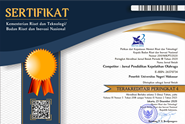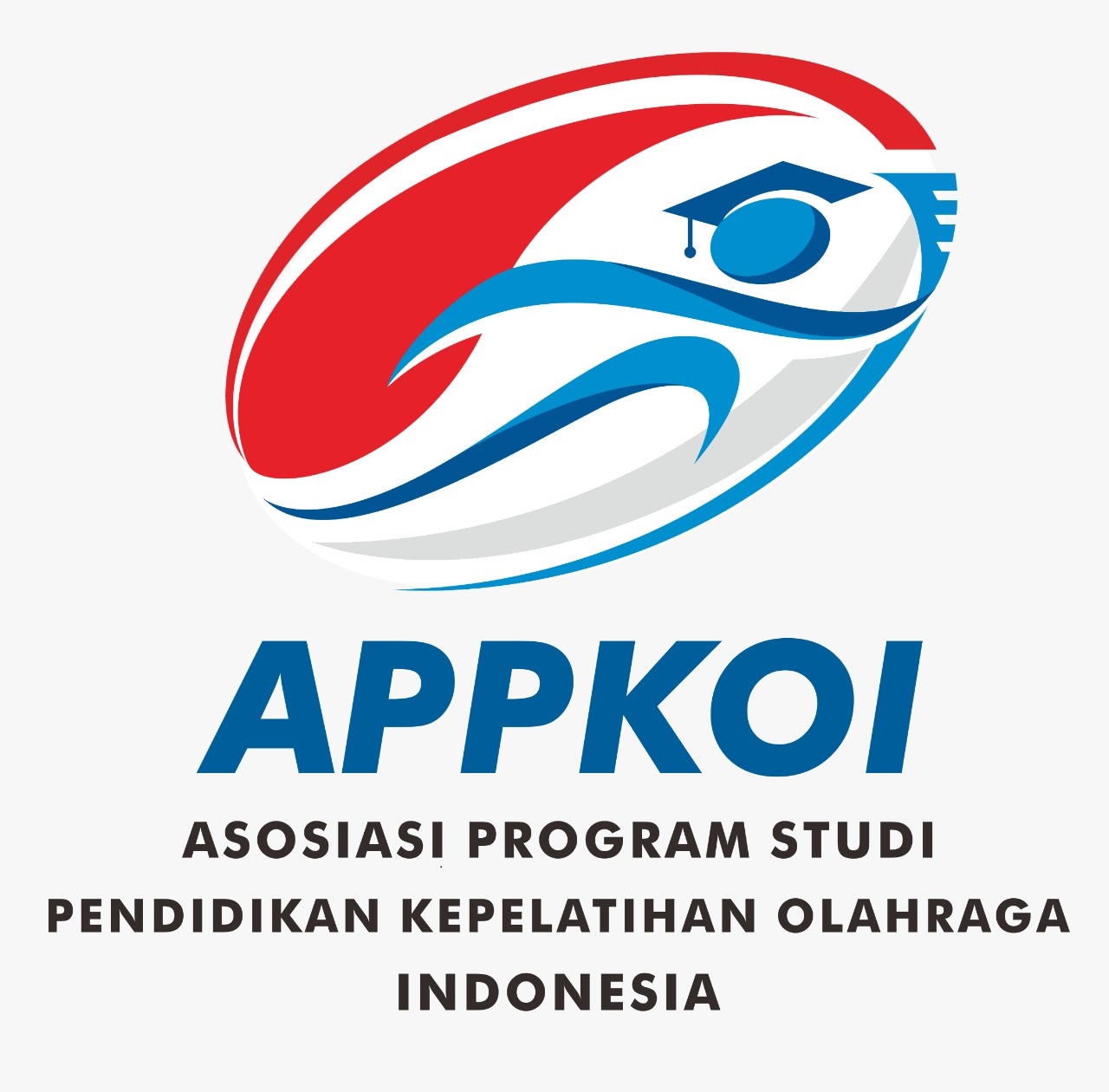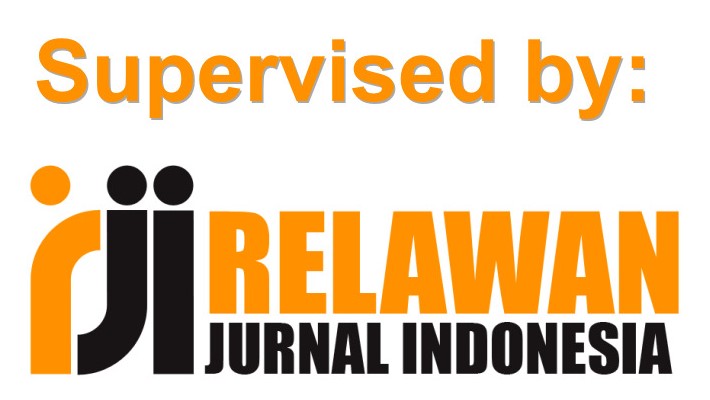The Application of Neuro Linguistic Programming (NLP) on Cognitive Function and Stress Reduction
(1) Indonesian Education University
(2) Indonesian Education University
(3) Indonesian Education University
(*) Corresponding Author
DOI: https://doi.org/10.26858/cjpko.v13i2.20793
Abstract
An approach or analysis of a problem that is expressed in the description of cognitive function and the reduction in stress levels experienced by athletes as a result of a pandemic situation so that there is no decrease in athlete's performance, several alternatives are needed that can maintain the athlete's condition. Based on the problems mentioned, the aim of this research is to evaluate the application of Neuro-Linguistic Programming (NLP) on cognitive function and stress reduction of basketball athletes. The method used in this research is the experimental method. The population in this study was 25 athletes in the sport of basketball at the Crows club. The number of samples is the total population of 25 athletes and the technique used is purposive sampling. The instrument for cognitive function uses the Montreal Cognitive Assessment (MoCA) and the instrument used for the level of stress is the DASS-21 Questionnaire (Depression Anxiety Stress Scale) developed by Lovibond. S. H and Lovibond. P. H (1995). The results of the study regarding the effect of the application of Neuro-Linguistic Programming (NLP) on cognitive function and stress levels can be concluded that there is a significant effect indicated by a significance value (sig.) Of 0.000, less than 0.05 (0.000 <0.05). The different test between the application of Neuro-Linguistic Programming (NLP) on cognitive function and stress reduction found that there was a difference in the effect between the application of Neuro-Linguistic Programming (NLP) on cognitive function and stress reduction marked with a 2-way (t-tailed) significance value of 0.000 < 0.05. Overall, the conclusion of this study is that the application of psychological training, especially the use of the Neuro-Linguistic Programming (NLP) method have positive effect on cognitive function and stress levels of basketball athletes during the COVID-19 pandemic.
Keywords
Full Text:
PDFReferences
Association, A. P. (2020). Stress in the Time of COVID-19. May, 2019–2021.
Burns David D, M.D. (1998). Terapi kognitif pendekatan baru bagi penanganan depresi. Penerjemah: Santosa. Jakarta: Penerbit Erlangga.
Bortoli, L., Bertollo, M., Filho, E., di Fronso, S., & Robazza, C. (2017). Implementing the TARGET model in physical education: Effects on perceived psychobiosocial and motivational states in girls. Frontiers in Psychology, 8(SEP), 1–14. https://doi.org/10.3389/fpsyg.2017.01517
Belleville, S., Hudon, C., Bier, N., Brodeur, C., Gilbert, B., Grenier, S., Ouellet, M. C., Viscogliosi, C., & Gauthier, S. (2018). MEMO+: Efficacy, Durability and Effect of Cognitive Training and Psychosocial Intervention in Individuals with Mild Cognitive Impairment. Journal of the American Geriatrics Society, 66(4), 655–663. https://doi.org/10.1111/jgs.15192
Brehmer, Y., Westerberg, H., & Bäckman, L. (2012). Working-memory training in younger and older adults: Training gains, transfer, and maintenance. Frontiers in Human Neuroscience, MARCH 2012. https://doi.org/10.3389/fnhum.2012.00063
Brooks, S. K., Webster, R. K., Smith, L. E., Woodland, L., Wessely, S., Greenberg, N., & Rubin, G. J. (2020). The psychological impact of quarantine and how to reduce it: rapid review of the evidence. The Lancet, 395(10227), 912–920. https://doi.org/10.1016/S0140-6736(20)30460-8
Carvalho, A., Miskowiak, K., Hyphantis, T., Kohler, C., Alves, G., Bortolato, B., G. Sales, P., Machado-Vieira, R., Berk, M., & McIntyre, R. (2015). Cognitive Dysfunction in Depression. CNS & Neurological Disorders - Drug Targets, 13(10), 1819–1835. https://doi.org/10.2174/1871527313666141130203627
Carvalho, A., Rea, I. M., Parimon, T., & Cusack, B. J. (2014). Physical activity and cognitive function in individuals over 60 years of age: A systematic review. Clinical Interventions in Aging, 9(April), 661–682. https://doi.org/10.2147/CIA.S55520
Chapman, S. B., Aslan, S., Spence, J. S., Keebler, M. W., DeFina, L. F., Didehbani, N., Perez, A. M., Lu, H., & D’Esposito, M. (2016). Distinct brain and behavioral benefits from cognitive vs. Physical training: A randomized trial in aging adults. Frontiers in Human Neuroscience, 10(July), 1–15. https://doi.org/10.3389/fnhum.2016.00338
Didymus, F., & Fletcher, D. (2014). Swimmers ’ Experiences of Organizational Stress : Exploring the Role of Cognitive Appraisal and Coping Strategies. May. https://doi.org/10.1123/jcsp.2014-0020
Eid Alroudhan, H. (2018). The Effect of Neuro-linguistic Programming Coaching on Learning English. International Journal of Applied Linguistics and English Literature, 7(4), 184. https://doi.org/10.7575/aiac.ijalel.v.7n.4p.184
Hagger, M., Keech, J., & Hamilton, K. (2020). Managing Stress During the COVID‐19 Pandemic and Beyond: Reappraisal and Mindset Approaches. July. https://doi.org/10.1002/smi.2969
Hanin, Y. L. (2007). Emotions in Sport : Current Issues and Perspectives Emotions in Sport : Current Issues and Perspectives. Handbook of Sport Psychology, October, 31–58. https://doi.org/10.1002/9781118270011.ch2
Hadi, M. F. Z. (2015). Pemanfaatan Konseling Neuro Linguistic Programming. 26(4), 174–182.
Jack R.Fraenkel, N. E. W. (2017). How to Design and Evaluate Research in Education. In Michael Ryan (Ed.), McGraw-Hill (7th ed., Vol. 91). Beth Mejia.
Kotera, Y., Sheffield, D., & Van Gordon, W. (2019). The applications of neuro-linguistic programming in organizational settings: A systematic review of psychological outcomes. Human Resource Development Quarterly, 30(1), 101–116. https://doi.org/10.1002/hrdq.21334
Lades Kate; Daly, Michael; Delaney, Liam, L. K. L. (2020). Daily emotional well-being during the COVID-19 pandemic. T2 - British journal of health psychology D0 - 10.1111/bjhp.12450. 1–13.
Leto, L., & Feola, M. (2014). Cognitive impairment in heart failure patients. Journal of Geriatric Cardiology, 11(4), 316–328. https://doi.org/10.11909/j.issn.1671-5411.2014.04.007
MacIntyre, T. E., Jones, M., Brewer, B. W., Raalte, J. Van, O’Shea, D., & McCarthy, P. J. (2017). Editorial: Mental health challenges in elite sport: Balancing risk with Reward. Frontiers in Psychology, 8(OCT). https://doi.org/10.3389/fpsyg.2017.01892
McCloskey, B., Zumla, A., Ippolito, G., Blumberg, L., Arbon, P., Cicero, A., Endericks, T., Lim, P. L., & Borodina, M. (2020). Mass gathering events and reducing further global spread of COVID-19: a political and public health dilemma. The Lancet, 395(10230), 1096–1099. https://doi.org/10.1016/S0140-6736(20)30681-4
Matthieu, M. M. (2006). Using Stress , Appraisal , and Coping Theories in Clinical Practice : Using Stress , Appraisal , and Coping Theories in Clinical Practice : Assessments of Coping Strategies After Disasters. November. https://doi.org/10.1093/brief-treatment/mhl009
Mustafa, N. (2020). Psychological Stress and Associated Factors during the Coronavirus Disease ( COVID-19 ).
Muzamil, M. S., Afriwardi, A., & Martini, R. D. (2014). Hubungan Antara Tingkat Aktivitas Fisik dengan Fungsi Kognitif. Jurnal Kesehatan Andalas, 3(2), 202–205. https://doi.org/10.25077/jka.v3i2.87
Norris, D. R., Clark, M. S., & Shipley, S. (2016). The mental status examination. American Family Physician, 94(8), 635–641.
Nurihsan, J., & Nurdin, S. (2007). Neuro Linguistic Programming-Based Counseling. I(2).
Parnell, D., Widdop, P., Bond, A., & Wilson, R. (2020). COVID-19, networks and sport. Managing Sport and Leisure, 0(0), 1–7. https://doi.org/10.1080/23750472.2020.1750100
Parnell, D., Widdop, P., Bond, A., & Wilson, R. (2020). COVID-19, networks and sport. Managing Sport and Leisure, 0(0), 1–7. https://doi.org/10.1080/23750472.2020.1750100
Pramadita, A. P., Wati, A. P., Muhartomo, H., Kognitif, F., & Romberg, T. (2019). Hubungan Fungsi Kognitif Dengan Gangguan Keseimbangan Postural Pada Lansia. 8(2), 626–641.
Roy, D., Tripathy, S., Kar, S. K., Sharma, N., Verma, S. K., & Kaushal, V. (2020). Study of knowledge, attitude, anxiety & perceived mental healthcare need in Indian population during COVID-19 pandemic. Asian Journal of Psychiatry, 51(April), 102083. https://doi.org/10.1016/j.ajp.2020.102083
Ruiz, M. C., Hanin, Y., & Robazza, C. (2016). Assessment of performance-related experiences: An individualized approach. Sport Psychologist, 30(3), 201–218. https://doi.org/10.1123/tsp.2015-0035
Sauliyusta, M., & Rekawati, E. (2016). Aktivitas Fisik Memengaruhi Fungsi Kognitif Lansia. Jurnal Keperawatan Indonesia, 19(2), 71–77. https://doi.org/10.7454/jki.v19i2.463
Schinke, R., Papaioannou, A., Henriksen, K., Si, G., Zhang, L., & Haberl, P. (2020). Sport psychology services to high performance athletes during COVID-19. International Journal of Sport and Exercise Psychology, 18(3), 269–272. https://doi.org/10.1080/1612197X.2020.1754616
Segrin, C., & Rynes, K. N. (2009). The mediating role of positive relations with others in associations between depressive symptoms, social skills, and perceived stress. Journal of Research in Personality, 43(6), 962–971. https://doi.org/10.1016/j.jrp.2009.05.012
Supendi, D. A. (2018). Teknik anchoring dalam memotivasi belajar siswa (optimalisasi fungsi bahasa).
Wahyuniarti, A., Bahrudin, M., & Safithri, F. (2017). Hubungan Antara Hipertensi Dengan Penurunan Fungsi Kognitif Pada Lansia. Saintika Medika, 9(2), 89. https://doi.org/10.22219/sm.v9i2.4135
Weinberg, A., Cooper, C., Weinberg, A., & Cooper, C. (2012). The nature of stress in turbulent times. Stress in Turbulent Times, 39–61. https://doi.org/10.1057/9780230306172_3
World Health Organization. (2020). Mental Health and Psychosocial Considerations During COVID-19 Outbreak. World Health Organization, January, 1–6.
Zhang, Y. (2020). Impact of the COVID-19 Pandemic on Mental Health and Quality of Life among Local Residents in Liaoning Province , China : A Cross-Sectional Study.
Article Metrics
Abstract view : 728 times | PDF view : 114 timesRefbacks
- There are currently no refbacks.
Copyright (c) 2021 Deni Herdiana, Komarudin Komarudin, Raden Boyke Mulyana

This work is licensed under a Creative Commons Attribution 4.0 International License.
COMPETITOR IS LICENSED BY :
 COMPETITOR is licensed under a Creative Commons Attribution 4.0 International License.
COMPETITOR is licensed under a Creative Commons Attribution 4.0 International License.
COMPETITOR EDITORIAL LOCATION :
![]() Kampus FIK Banta Bantaeng, Jalan Wijaya Kusuma Nomor 14, Rappocini, Makassar, Postal Code 90222
Kampus FIK Banta Bantaeng, Jalan Wijaya Kusuma Nomor 14, Rappocini, Makassar, Postal Code 90222
COMPETITOR IS INDEXED BY















